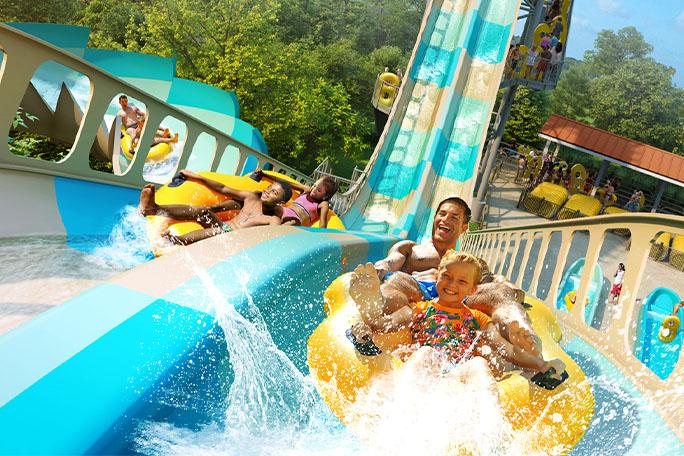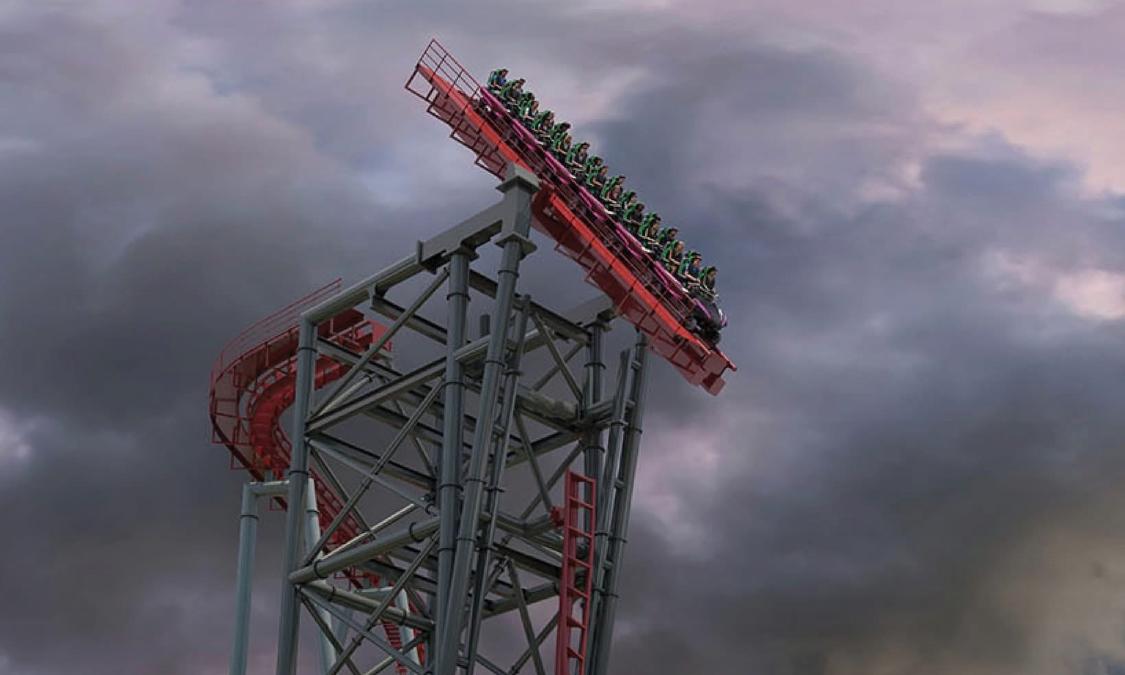Sirens Curse At Cedar Point - New For 2025

Cedar Point shocked the amusement industry with the surprise announcement of North America’s tallest, fastest, and longest tilt coaster, Siren’s Curse. A tilt roller coaster is a coaster with a section of track that is not connected on one end, appearing broken off. The train comes to a stop on this section of track, which functions like a giant see-saw. The entire track then tilts and rotates until it aligns perfectly with the next section. Once locked in place, the train is released and continues through the rest of the ride’s layout.
Due to the visuals of approaching a disconnected track, tilt coasters are considered one of the most terrifying types of roller coasters ever built. When Cedar Point announced Siren’s Curse, reactions online were as dramatic as the ride itself, with comments on our Facebook page ranging from:
“That’s just a mess waiting to happen.. sliding off the track.”
“They expect people to trust this?”
“This is a Final Destination scene waiting to happen I swear!”
Let’s dive into how a tilt coaster works and why the Siren’s Curse trains won’t slide off the tracks.
Siren’s Curse is manufactured by Vekoma, a company that has been building roller coasters since 1979. They pioneered the original tilt coaster, Gravity Max at Discovery World in Taiwan. Gravity Max has been operating without any major issues since 2002. Siren’s Curse is essentially Generation 2.0, or the latest new and improved model. As Vekoma states on their website: “Vekoma recently upgraded and adapted the Tilt Element to Vekoma’s new generation of sit-down thrill coasters.”
Gravity Max uses the old track design where the wheels are inside the rails while Siren’s Curse will use the new, smoother track where the wheels are on the outside of the rails.
 .
. Safety Features of Tilt Coasters
Siren’s Curse begins innocently enough with a typical chain lift hill. But upon cresting the apex, you’ll notice the track suddenly ends – the rails stop and you see nothing but blue sky. The train is pushed forward by drive tires until it reaches the end of the track, thankfully coming to a stop. It’s terrifying because it seems as though you could keep going and roll right off the track, but that’s not the case.
The first mechanism to prevent you from falling off the track is a bracket on the end of the tilt track. When the track starts tilting forward, this feature is actually the backup safety feature and doesn’t support any weight of the vehicle (though it can if needed). Roller coasters are designed with redundant safety features and they’re designed to fail safe, meaning if something does fail it does so in a predictable way and returns to a safe state.

The primary holding mechanism that bears the weight of the train is the rear claw which latches onto a bar fixed to the last coach:

You can see the claw engage in this reverse POV of Gravity Max from Theme Park Review:

Once the claw is engaged and the computer gets the OK, the clamps holding the track in the horizontal position disengage, and hydraulic rams start rotating the track to the vertical position.

After the track tilts to the full vertical position, clamps pull the track and hold it tightly against the support structure so it doesn’t move. There are sensors fixed to the inside of the rails on the stationary and movable track to preciously check the position of the track to ensure the rails are aligned. If everything is good, the front bracket is lowered, the computer gives the OK to release the train, and the claw is released.

Occasionally, the rails will fail to align, usually due to a weather related event like powerful winds. If the rails aren’t able to fully align for any reason, the computer won’t release the train. Instead, it lowers the tilt track back to the horizontal position and riders will be safely released from the train and onto the horizontal platform designed for exactly this purpose.
Full Size Prototype Testing
Computer aided engineering (CAE) and simulations are great, but nothing beats real-world testing with physical parts. Over two years ago, Vekoma constructed a full-scale prototype coaster equipped with the entire tilt track system. This allowed them to conduct an extensive testing program at the factory before shipping the components. As a Vekoma engineer explains in the video from Coaster Studios below, they tested different load configurations with water dummies in order to define the tilt motion as well as different failure cases.
It’s not confirmed but it very well could be that some of the components we’re seeing in this video are the exact ones being used for Siren’s Curse!

Viewpoint is different but the support structure of the prototype versus Siren’s Curse renderings appear to be the same.
Share:



